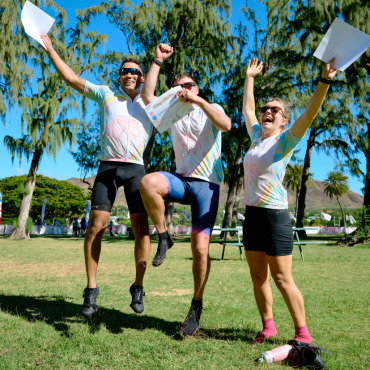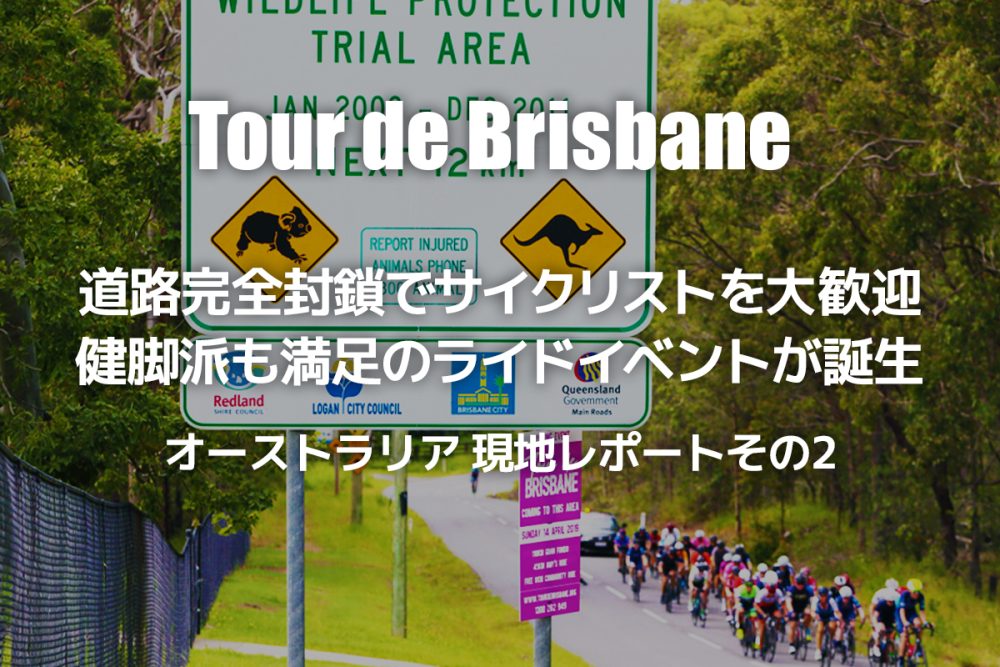
Honolulu 🇺🇸
NewYork City 🇺🇸
Port Douglas 🇦🇺
Brisbane 🇦🇺

The Tour de Brisbane was held on Sunday, April 14. A total of 3,209 riders entered the race, a very large number for a first-time event, and the South Bank, the start/finish line, was packed with cyclists from early in the morning. First, the UCI Gran Fondo road race waved off for each age class, followed by the Amy’s Ride, which departed from Southbank, divided by distance.
*This article is a reprint of a July 2019 article.

After starting the race, we will proceed along the right bank of the Brisbane River for a while and first cross the Story Bridge, the iconic bridge in Brisbane. From here, you can see a panoramic view of the skyscrapers, and we would like to take our time and enjoy the view, but since we are only 3 km from the start, everyone’s legs are still fresh. In addition, he said the pace was very fast, perhaps because he was used to seeing the scenery.

In the center of the city, the roads are very wide with two to three lanes on each side, and since driving is on the left side of the road, just like in Japan, one can drive without feeling uncomfortable. However, there are many multi-level intersections, overpasses, and underpasses, so the group quickly broke up at this point.


After 20 km, the route begins its ascent to Mt. Coot-tha, the highest point on the route. However, the highest point is only 279 meters, which is lower than the Yabitsu Pass in Hadano City, Kanagawa Prefecture, as well as the Fudo Pass on Mount Tsukuba. But that does not mean you should let your guard down. Yes, as mentioned earlier, the elevation gain is small, but there is a time limit, so you must keep up the tempo or you will be cut off.

Speaking of Gran Fondo, the refreshments served at the aid stations are probably one of the most enjoyable parts of the event. There are many events in Japan that offer this as a selling point. However, for the Tour de Brisbane, there were only bananas, apples, and water-dissolving energy supplements, and the number was much smaller. However, since this is only the first event, let’s look forward to the next one and beyond.


Legacy Way Tunnel, a vehicle-only bypass, and the Southeast Busway, a bus-only road, were also completely closed. This level of traffic control for an urban event in which the general public can participate is a bit unthinkable in Japan. In addition, on the vast country roads in the suburbs, there are signs saying, “Beware of wild koalas and kangaroos” and you can enjoy the scenery that is uniquely Australian.



Working with local Australian participants, the local Japanese rider returned to the finish line at Southbank, finishing in a fairly high position. If the riders fail to pass through several checkpoints within the set time, they will be automatically guided to the 45km route or cut off from the rest of the race. In addition, the age range of the participants was wide, and the top group was definitely of a high level. On the other hand, some of the participants in the 45km section were seen pushing their bicycles up Mt. Coot-tha and taking long rests at the aid stations. In addition, they witnessed mechanics rushing to the scene in support vehicles in the event of a flat tire or other problems, making this an event that cyclists of all levels can enjoy.
Incidentally, all participants who complete the race will receive a square designed pedal. This is a memorial.

Now, let me also introduce you to a little-known event in Japan, the Six Day of track competitions held at the Anna Meares Velodrome.
Post Date:2019.07.10